Flow Screed Preparation in Worthing,
Maidstone, Crawley, Canterbury, Sevenoaks, Surrey, Kent and Sussex
At SSR Flow Screed, we know that a screeded floor is only as good as the preparation work that goes into it. As such, our team carries out a reliable flow screed preparation service to ensure the quality of your project. Whether it’s a new build in Crawley or Sevenoaks or an existing home in Brighton or the Worthing area, you can rely on us for attention to detail and to work to best practices, each and every time.
Our screeding company has a reputation in Ashford, Maidstone, Canterbury and Tunbridge Wells. We serve Surrey, Kent and Sussex, and apply our detailed knowledge to projects throughout the South of England.
Read our FAQs for clear answers to some common questions about flow screed preparation, or get in touch to discuss your requirements.
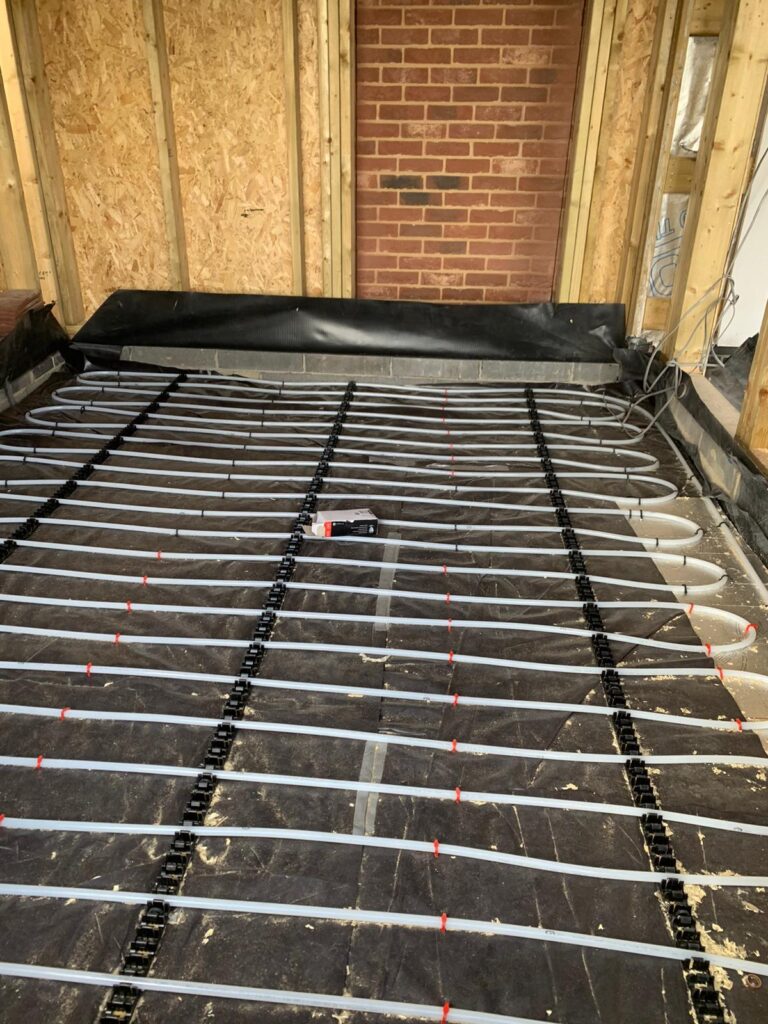
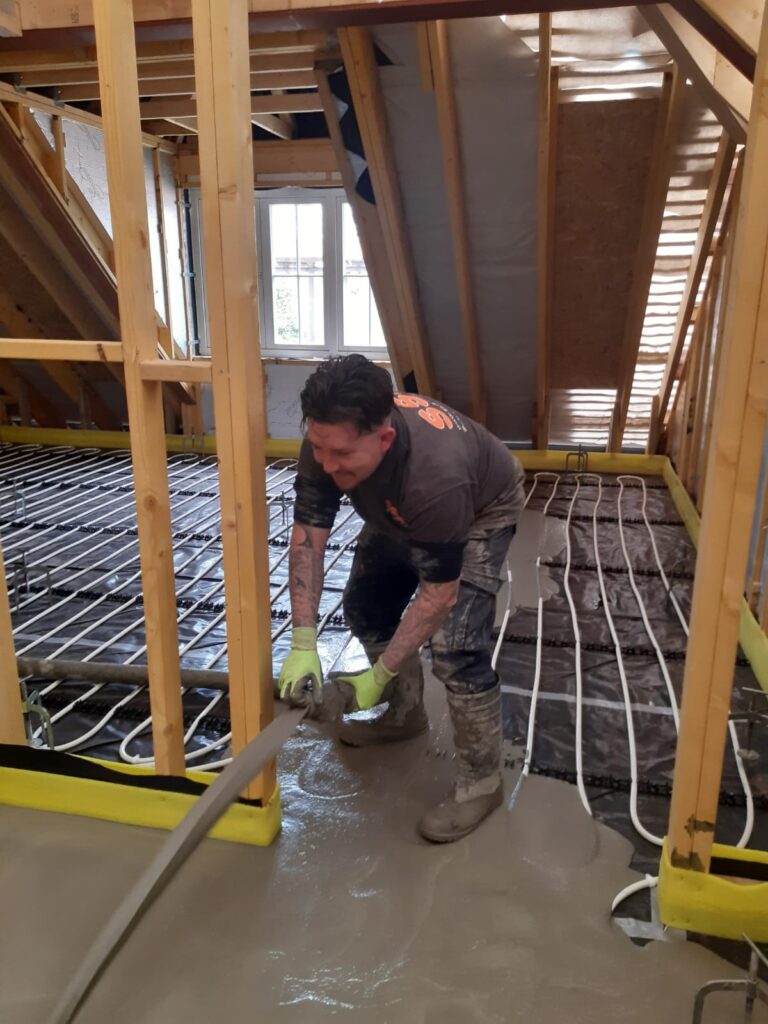
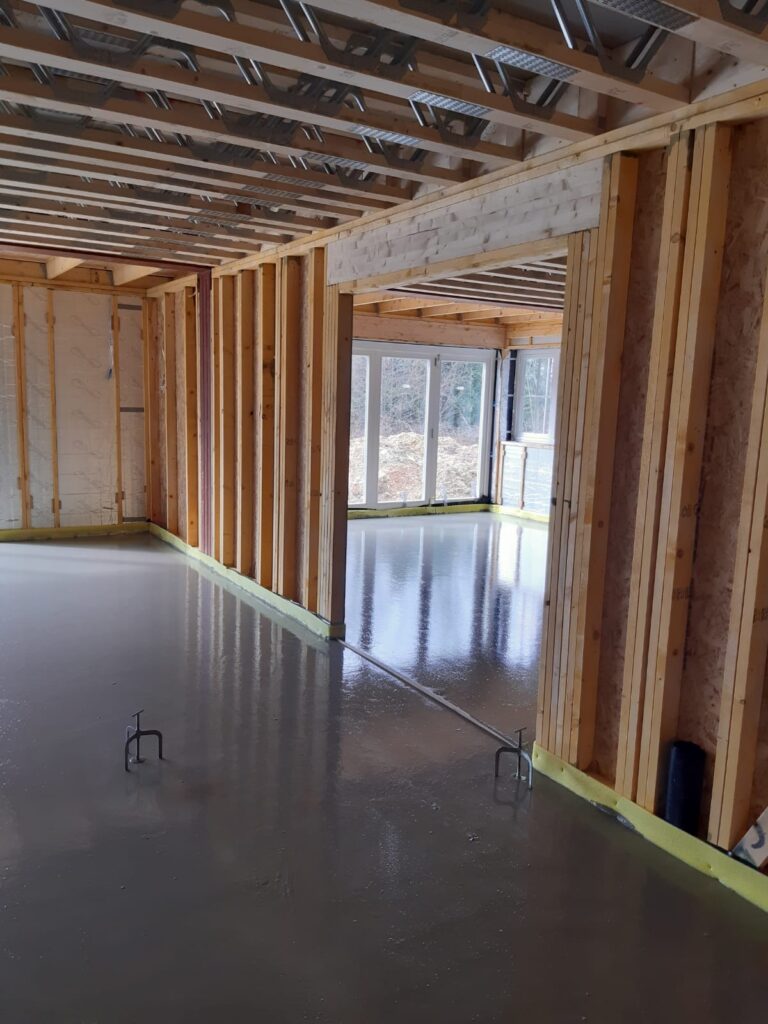
If you’d like to learn more about what’s typically involved in the process, why not take a look at our guide? Note that our team tailors its approach to suit your project, which only ensures superior workmanship.
Flow Screed Preparation | The Post-Care of Screed
- You must wait 5 days before fitting anything load bearing, such as partition walls, kitchen units etc.
- Ensure window and door glass remains covered, sun through glass causes solar heat gain, which, force dries your floor. This causes cracking and a blemished finish.
- Screed must be completely dry before covering floors, always have your floor moisture tested before installing any floor covering.
- Sanding away laitance on Gypsum screed only, after 7 days may accelerate the drying process.
- De-humidifiers may be used to accelerate drying after 4 days, but not before!
- We advise that the floor is moisture tested even following these guidelines. SSR accept no responsibility for failed flooring due to moisture!
- You should allow 24-48 Hours before walking over your floor.
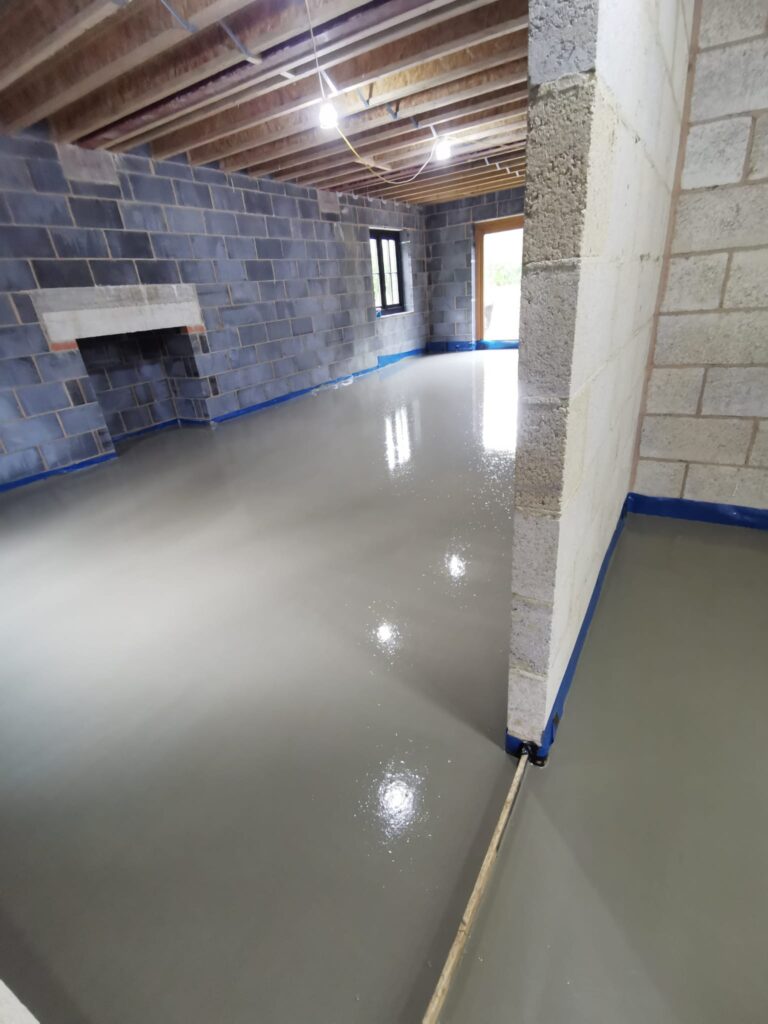
Underfloor Heating
It is important, when using the underfloor heating for the first time or when using it to aid your drying times that you follow these rules. By doing so, you maximise the success of the flow screed preparation process.
Adjustment of the blending valve on your manifold will not control the temperature of the water running through it, it only controls the flow, therefore, you must make sure that:
-
Your screed has been laid for a minimum of 7 days.
-
Your boiler output temperature is set to 30 degrees to start with (this will make sure you do not cause thermal shock to the screed. You can then set the demand through your u/h system.
-
After 4 days, you may increase your boiler temperature by 1 degree each day.
-
Do not just turn it all off when the screed is dry, decrease it gradually over a few days, again by decreasing the boiler temperature output.
Thermal shock is quite easy to spot just by the way the screed cracks, we would be able to tell straight away if this procedure has not been followed in your Crawley, Ashford, Brighton, Worthing, Maidstone, Canterbury, Sevenoaks or Tunbridge Wells property.
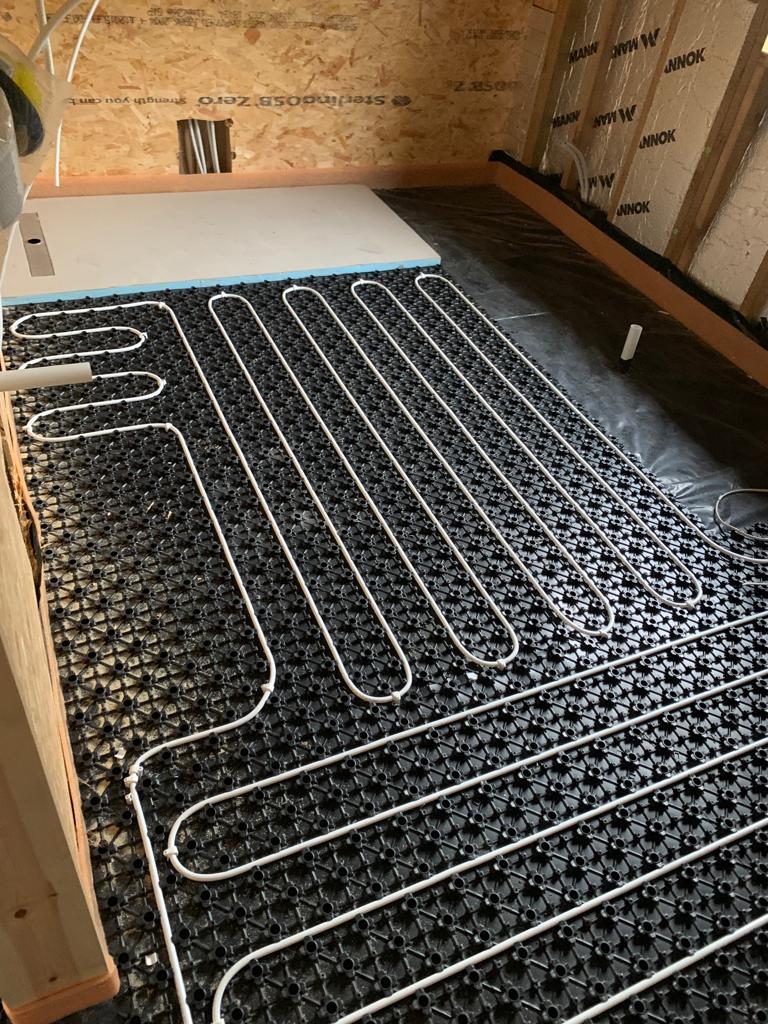

Aftercare of cementitious screeds
Once laid, you can tile over cementitious flowing screeds with a final moisture content of 3.5%CM. If you want to install a timber floor over the screed, you can do so when the final moisture content reaches 2.5%CM.
While other liquid screeds typically require force drying through use of underfloor heating, you can use cementitious screed as part of a non-heated floor. This is because it doesn’t require force drying to remove moisture.
If laying tiles, you can do so with the correct tiling adhesive in as little as 5 days for non-heated floors. If you have a heated floor, you must wait 16 days, and the heating system must have undergone commissioning.
Drying times for cementitious screeds
For a 50mm depth cementitious screed, the drying time is around 21 days, and higher depths will increase these guidelines. Again, you should have the floor moisture tested to ensure it is safe to cover!
Aftercare for anhydrite screeds
In the 24 hours after we install an anhydrite screed, you must ensure that the entire area is not subject to extreme temperatures. The temperature of the space must not fall below 5°C, and it is essential to keep it free of frost. Conversely, the temperature should not exceed 30°C either. Furthermore, the surface of the screed must have the necessary protection against direct sunlight and draughts.
Drying times for anhydrite screed
1 day per mm up to 40mm, after 40 mm it becomes 2 days per mm. Again, always have the floor moisture tested before installing any floor covering. If laid on an underfloor heating system, you can use the heat to force dry the screed. This can reduce the expected drying time by as much as 50% to 60%. However, you must do this slowly. If you force dry too quickly, you will shock the screed. Follow the steps in the ‘Underfloor Heating’ section above for the best results. While using underfloor heating to dry your screed, ventilate your room in an appropriate way. The most common solutions are opening doors and windows or using dehumidifiers.
